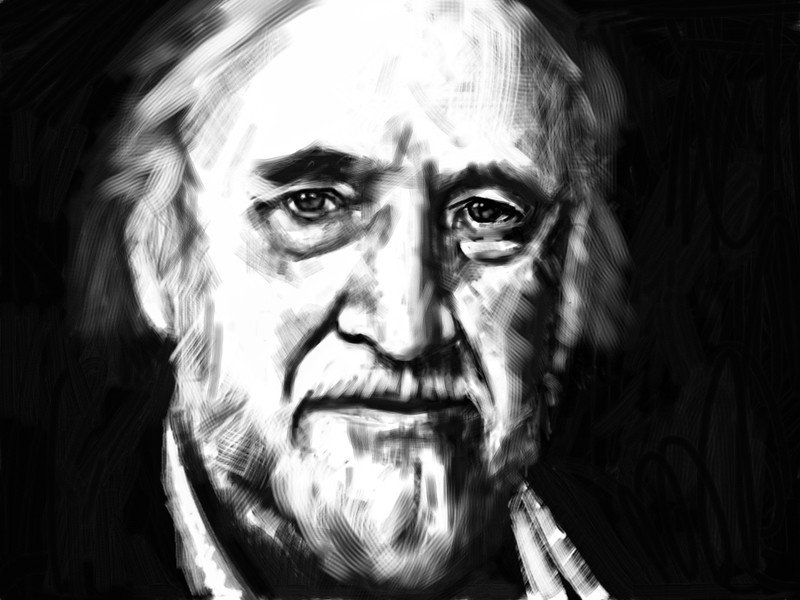Richard Matheson has been aptly described as, “the most famous horror writer that you’ve never heard of,” meaning that you know his body of work, you just never knew the face behind it. So here’s your chance to learn about one of the most prolific writers of the genre, with a career that spanned nearly seven decades.
The Early Years
Born in Allendale, New Jersey on February 20, 1926, Richard Matheson was the child of Norwegian parents and was raised in Brooklyn, New York. As a child he had his heart set on a musical career, but he stumbled upon his love of fantasy that sparked his creativity and imagination—by the time he was eight years old his stories had already appeared in a local newspaper called The Brooklyn Eagle. Transfixed by the earliest examples of Dracula on the big screen, he already had his idea for the vampire story I Am Legend (1954).
Introduction to Adulthood: His Time in World War II
Matheson graduated from Brooklyn Technical High School in 1943, during the late years of World War II, he was a hardworking student who planned to continue on his education in the field of engineering. Due to the timing of his graduation, he enlisted in Army Specialized Training at Cornell in order to go into the military as an engineer instead of being enlisted as an infantry soldier—as luck would have it, the program was canceled and he ended up in the infantry anyway. According to biographical sources, Matheson served in the Eight-Seventh Division of the U.S. Infantry—known as The Golden Acorn Division—in France and Germany until nearly the end of the war when he was medically discharged due to trench foot. In 1960 he published The Beardless Warriors which described his experiences through the eyes of a common soldier and was the first known instance where his style was captured—first-person narratives from male characters who were confused in ambiguous situations.
A Formal Education
Following his return from the war, Matheson lived with his mother while he sought advice on how to proceed with his career in life—a guidance counselor suggested the journalism program at the University of Missouri. By 1949, Matheson had earned a bachelor’s degree in journalism and also published his first story, “Born of Man and Woman,” in the third issue of the Magazine of Fantasy and Science Fiction from which he earned $25. Matheson often sent stories into this publication after reading the first issue and feeling as if it were one-of-a-kind, something that appealed to his eclectic writing style. After graduating from the University of Missouri in 1949, he moved to the west coast where he met his future wife, Ruth Ann Woodson on a beach in Santa Monica. They were married by 1952.
When his first story appeared in the summer of 1950, he was immediately contacted by an agent. In Richard Matheson’s Monsters: Gender in the Stories, Scripts, Novels, and Twilight Zone Episodes it was said that Matheson would regularly submit his stories to newer publications, to maximize his exposure, since he knew the importance of working with them. Later, when Matheson was ready to publish his first story collection, he dedicated it to William Peden at the University of Missouri, a man who had been his professor and someone who Matheson had considered his mentor.
A Literary Career
There are very few authors who, when truly recognized for their work in the horror and fantasy genre of the twentieth century, would be considered greater than Richard Matheson—while he’s known for many of his novels, such as I Am Legend as well as his work in television with sixteen of the original Twilight Zone episodes, and made-for-TV movie The Night Stalker, it’s only usually his work that is recognized and not his name. It’s truly a shame though, as he was a major influence on nearly every major writer of science fiction, horror, and fantasy—including the greats like Stephen King, Neil Gaiman, Peter Straub, Joe Hill as well as filmmakers such as Stephen Spielberg and J.J. Abrams.
With the type of legacy that Richard Matheson has left behind, it’s wonderful to know that he was around long enough for people to take notice of his talent–and this particular video was made for aspiring writers who would appreciate any advice from someone they might look up to.
His Final Years
Matheson passed away in June 2013 at the age of eighty-seven. As of this posting, it has been seven full years since Richard Burton Matheson passed away, but this prolific American writer of fantasy, horror, science fiction left behind a legacy of work that helped to shape the horror culture that we have today.

Georgia-based author and artist, Mary has been a horror aficionado since the mid-2000s. Originally a hobby artist and writer, she found her niche in the horror industry in late 2019 and hasn’t looked back since. Mary’s evolution into a horror expert allowed her to express herself truly for the first time in her life. Now, she prides herself on indulging in the stuff of nightmares.
Mary also moonlights as a content creator across multiple social media platforms—breaking down horror tropes on YouTube, as well as playing horror games and broadcasting live digital art sessions on Twitch.


